
views
Riffle Shuffling on a Table
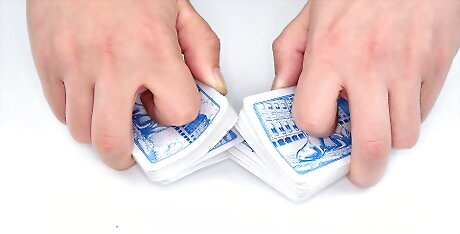
Use this shuffle for serious games, or for practice. Performing the riffle shuffle on a table surface makes it more difficult for players to catch a glimpse of the cards while shuffling, which is why this method is often used in casinos. It's also easier than riffle shuffling in your hands, so start here if you are learning how to riffle shuffle.
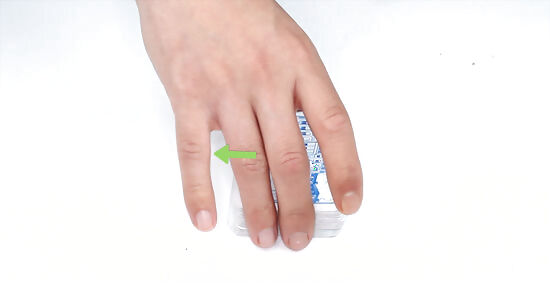
Separate the deck into two stacks. Neatly stack the deck of cards on the table in front of you. Use your right thumb and forefinger to pick up approximately half the deck. Move it to the right, then pick up the left stack with your left hand in the same way.
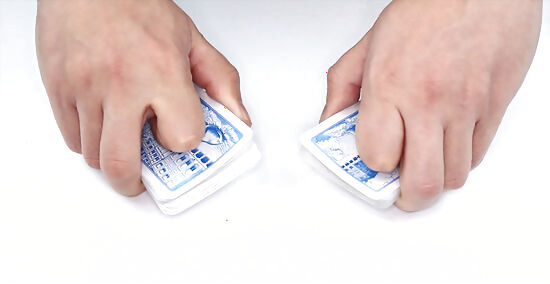
Hold the stacks. Arrange the two stacks so the long edge of the cards is facing you. On the right stack, place your right thumb along that edge, near the right-hand corner. Place your index finger lightly on top of the stack. Place your middle finger against the opposite long edge, with your other fingers resting next to it or on the table. Repeat these motions to grip the left stack.
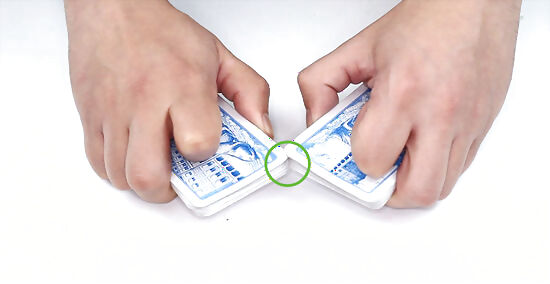
Position the stacks. Move the two stacks nearer each other, so the short edges are nearly touching. Rotate the stacks slightly away from you, so the corners nearest you are nearly touching.

Riffle shuffle. Bend the closest, long edge of each stack upward with your thumbs, while leaving the far, long edge against the table. Simultaneously move your thumbs upward along the edge, releasing cards to snap back onto the table. The cards from each stack should overlap each other as they fall. The cards will probably not alternate perfectly from one stack, then the next. A perfectly interlaced riffle shuffle is called an out shuffle or in shuffle. This is incredibly difficult to accomplish, and is typically only used by skilled card trick magicians.
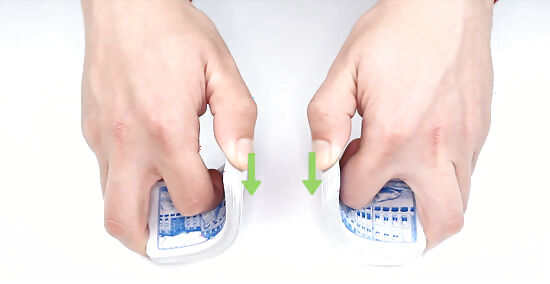
Try an alternate method. If you are having trouble getting the cards to overlap, try this method instead. Grip the outer, short edge of each stack with their pinky and ring fingers, and the inner, short edge with their thumb. Bend the inner side of the stacks upward with your thumb, using your index fingers to press the outer side down flat on the table. Release the cards gradually by moving your thumb upward and outward, so the cards snap back down onto the table in an overlapping pattern. This bends the cards more severely, wearing them down faster and potentially making them easier to view during the shuffle.
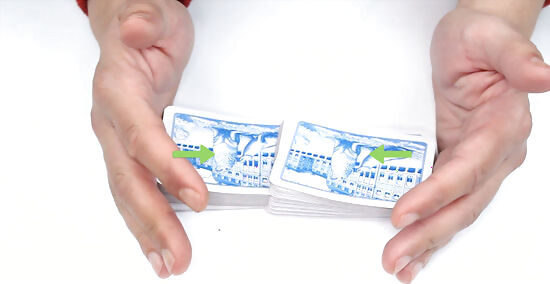
End the shuffle. The simplest way to finish is to push the two overlapping stacks together into one. Alternatively, skip ahead to the bridge finish section to learn a fun, flashy ending.
Riffle Shuffling in Your Hands
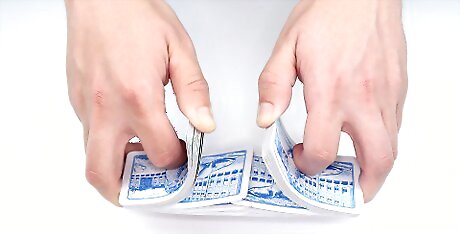
Use this shuffle to impress. Riffle shuffling in your hands is a bit more difficult than using the table, and it's more likely that the people you play cards with won't know how to do it themselves. Once learned, you can quickly end with a flashy bridge finish for additional effect. This method is not used in casinos, since other players can often see the cards during the shuffle. Like any riffle shuffle, this does bend the cards, and can wear them out faster than other shuffles.

Separate the deck into two halves. Stack a deck of cards neatly in front of you. Separate them into two stacks, roughly the same size. Hold one stack in each hand, face side down.
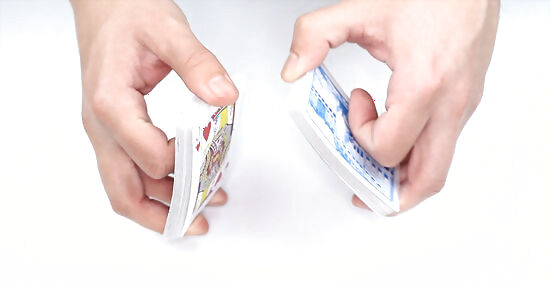
Grip each stack. Follow this step for each stack. Place your middle and ring fingers at the short end of the stack, curling around with your fingertips on the bottom of the pile. You can place your pinky and index fingers wherever you like, depending on what feels stable to you. Here are a couple common options: Use your pinky finger to curl around the cards next to your middle and ring fingers. Place the knuckle of your index finger on top of the pile. or Place your pinky finger and index finger on the long edges of the stack, keeping it stable from side to side.

Riffle the cards together. Move the stacks close together. Place your thumbs on the short edges next to each other, and bend each stack upward. Release the cards in a "riffle" by slowly moving your thumbs upward and outward, letting the bent cards snap back into a straight position, interlacing with the cards on the other stack. You may use your index finger to help bend the cards, pushing downward near the middle or the finger-gripped edge of the card. This step can take a fair amount of practice, so be prepared to pick up cards that get flung around the room.
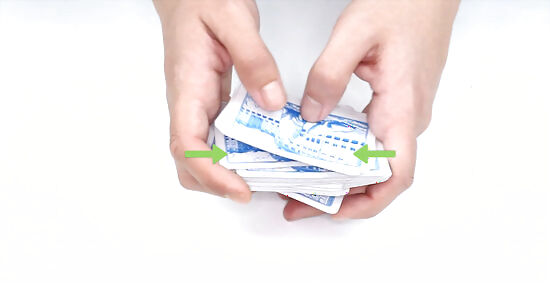
Finish the shuffle. You can simply push the two interlaced stacks together to finish the shuffle. Alternatively, use a fancy sign off by continuing on to the bridge finish instructions.
Ending with a Bridge Finish
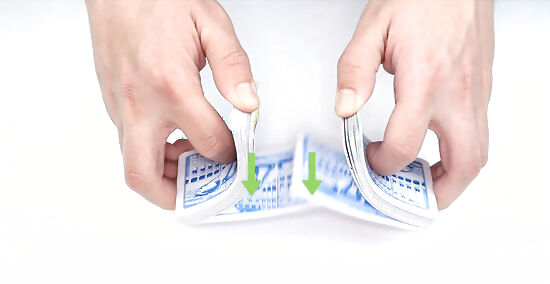
Perform a riffle shuffle first. To perform a bridge finish, you'll need to start with a stack of cards that have just been riffle shuffled. The riffle shuffle leaves you with two stacks of cards, interwoven along one short edge. If you've riffle shuffled one corner together, rotate the stacks slightly so they are aligned in one, straight line. The bridge finish is also called a "waterfall" or "cascade" finish. There is no standardized system of terms, so you might see other finishes referred to by the same names.
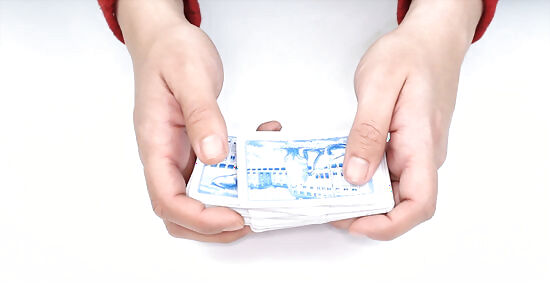
Grip the outer edges of the stack. Use your middle, ring, and pinky fingers to grip the outer, short edges of the riffled cards, curling them around onto the bottom surface. If you just performed the riffle shuffle in your hands, you can keep the same grip. You may use your index fingers to help grip, or to stabilize the cards by placing them lightly along the edge.
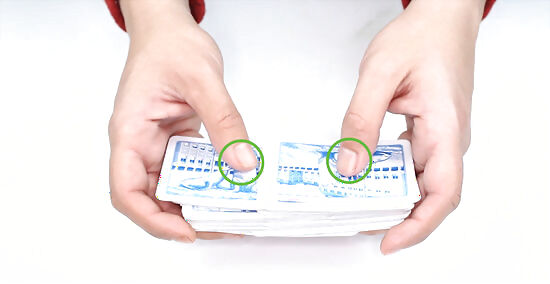
Put both thumbs on top of the interwoven area. Position your thumbs on top of the center of the stack, directly over the edges that have been interwoven together. You'll be using these to press the top arch of the "bridge," preventing the cards from flying apart upwards.
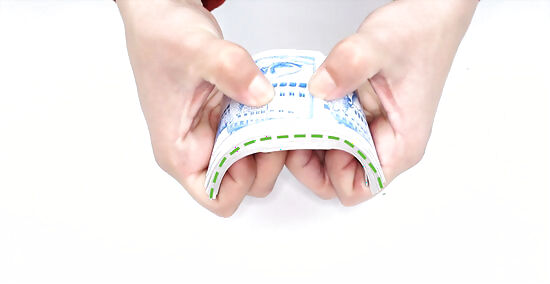
Push the cards upward into an arch. Use your hands to push the two sides of the stack together, forcing them into a high arch. This shape is what gives it the name "bridge finish."
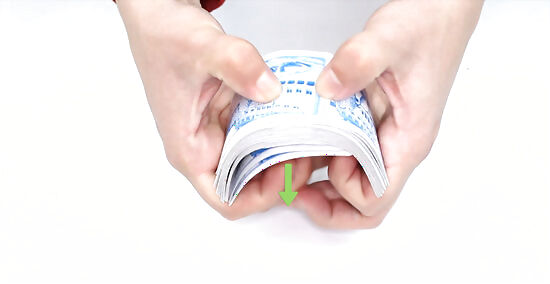
Open your fingers to let the cards fall. Release your grip by letting your fingers fall into a flat position. Gently move your hands apart by a tiny amount to release the tension, causing the cards to fall down in a "cascade" or "waterfall" pattern. Keep your fingers together and flat so you can catch the cards. Remember to keep your thumbs pressed on top of the arch the whole time.













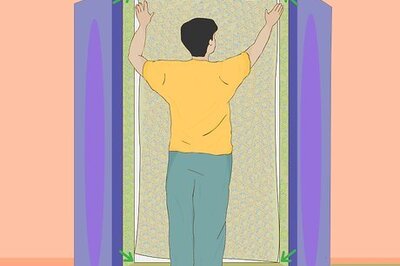





Comments
0 comment